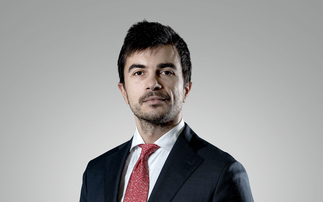Partner Insight: Fidelity portfolio manager Alex Wright on how he deals with negative market sentiment and why he approaches risk in a different way to his peers
How do you implement your investment strategy on the Fidelity Special Situations Fund?
We follow a bottom-up approach to choose the 100 or so stocks that form the portfolio. Specifically, we invest using a three-stage cycle - when stocks enter the portfolio at stage one they will have been through a tough period, valuations are typically low and sentiment towards them are very negative.
Crucially, we look to understand if that negative sentiment can be reversed if a recovery was to take place. We undertake a lot of due diligence around what is going on at the company in this stage.
If things do start to turn and change becomes apparent at a company, the stock moves into stage two. Here we will see the stock begin to perform well, earnings should improve, and other investors tend to become more and more interested in the company.
Stage three is the final stage where hopefully things have continued to fall into place with sentiment having improved and the company continuing to deliver from an operational perspective. By this stage the potential for future gains is more limited so it is our time to sell and we look to deploy capital back in to more attractively valued stage one opportunities.
By applying this very disciplined investment approach - which is supported by the tireless research of our analyst team at Fidelity - we believe it gives us a solid grounding to produce superior returns for clients over the longer term.
Given the investment process, where does risk analysis fit into the investment strategy?
Risk is important but I don't see it as a variability or volatility, which is how a lot of investors can analyse it. I am definitely aware of how the fund looks from a ‘beta versus benchmark tracking error' point of view, but to me risk is about how much absolute downside position there is and what set of circumstances could produce that. When selecting stocks on an individual basis we ensure no stock ends up accounting for more than 10% of the risk of the fund. Similarly we have to be careful to ensure we aren't significantly exposed to macro factors relating to, for example, currency or the oil price, in order to avoid unnecessary risk. We also don't look at stocks relative to a sector or benchmark; what matters to me is permanent loss of capital.
How does having access to Fidelity's deep research pool of analysts assist you?
Clearly we cannot just take the word of a company's management for how they are doing. That is where the analysts I work with are key, and every stock in the Special Situations portfolio is researched in conjunction with members of our analyst team which really enables us to dig deeper, challenge our own thesis and build conviction in the scale of an opportunity.












